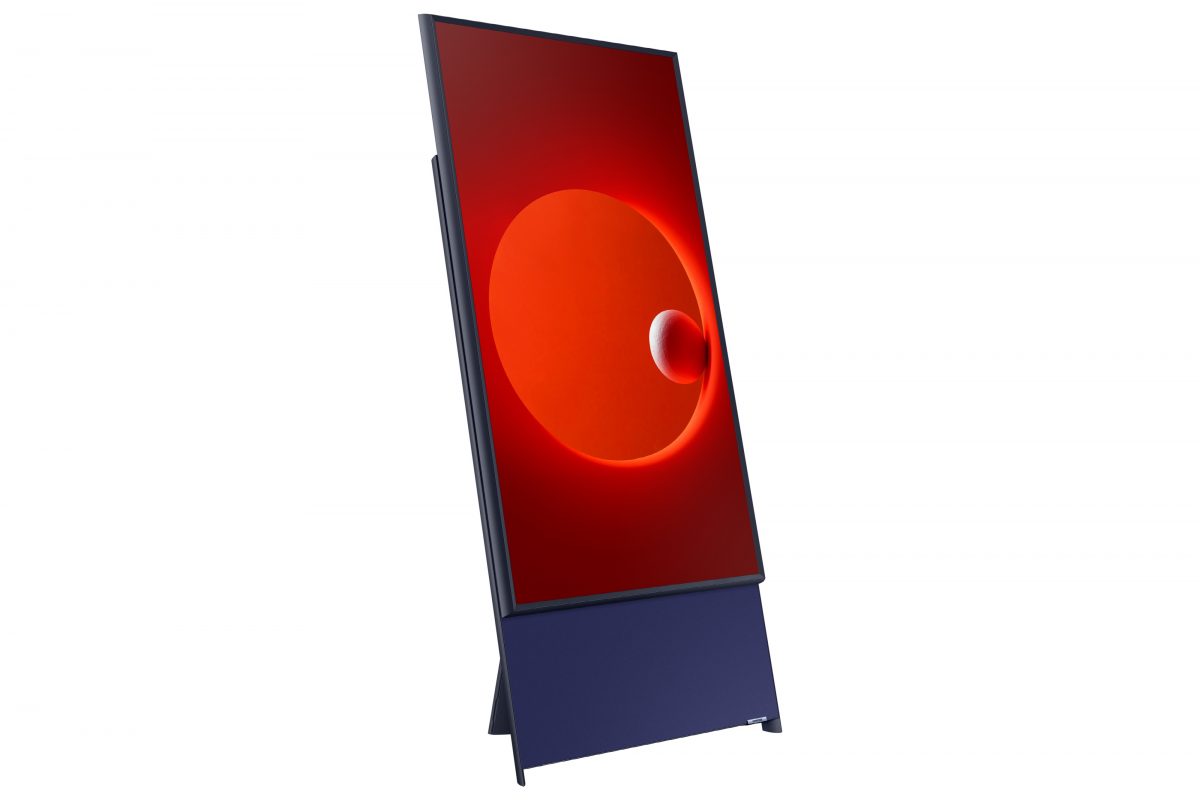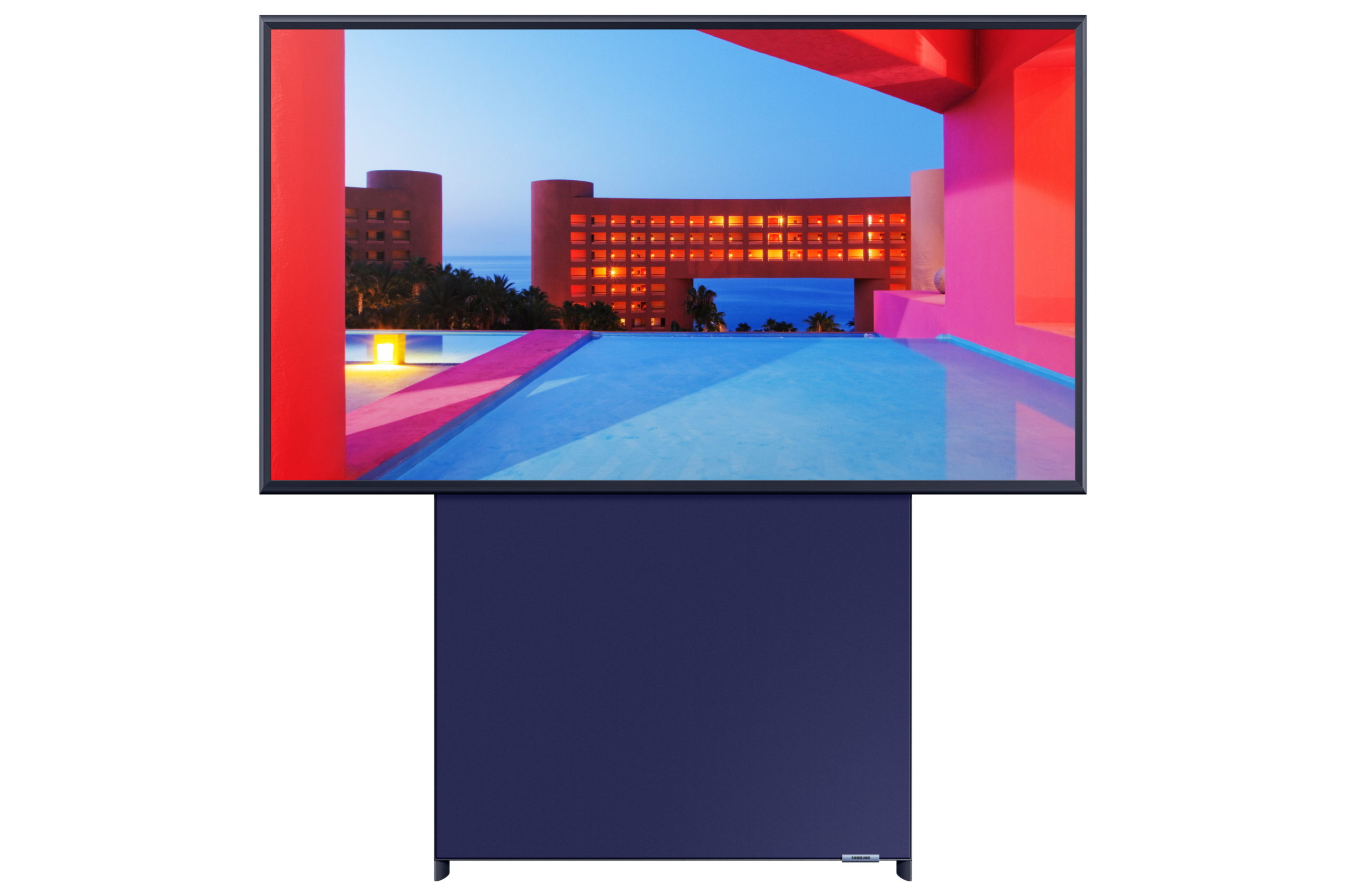
Samsung Launches More MicroLED, Portrait Mode TV At CES2020
January 6, 2020 by Dave Haynes
The massive CES consumer gadgets show is on this week in Las Vegas, and there are plenty of poor souls from this industry who are obligated to be there this week – dealing with endless line-ups for everything and supply/demand hotel pricing that sees terrifying places like Circus Circus charging $300+ a night.
The argument for going – if you don’t have to because you work for a manufacturer and will be chained to a CES show booth – is that this is a chance to see the latest electronics gadgets, before they hit physical and digital store shelves.
But the show is consumer-focused, so very little of what is revealed and celebrated has commercial applications. Manufacturers launch TVs, not commercial displays, for example. If you want to see smart home speakers, drones, folding phones and appliances with screens, this is your place.
So, I’m not there and (happily) don’t need to be there, but still keeping an eye on press releases from the big guys, and analyses from tech press that take more than a fan-boy perspective on the latest/greatest.
The press events started this weekend, ahead of the show, and arguably the largest one so far has been Samsung, which did what’s billed as a First Look. As you might expect, there was news about its microLED The Wall, 8K screens, and a screen that surrenders to all those people who insist on shooting video in portrait mode.
There are only so many Premier League strikers and Yankees’ fastballers who can afford a six-figure TV for their media room wall, but Samsung continues to market and even expand the product range for its The Wall modular microLED displays.

Samsung has previously announced versions as small as 75-inches and as large as 219-inches, though the nature of LED modules is that a version can be done at whatever dimension the space demands. Now there are new 88- and 150-inch MicroLED models.
One of the things Samsung is talking up with the 2020 version is how these displays can push to as bright as 5,000 nits. For context, 2,500-3,500 nits is considered what you’d need for a display used in direct sunlight.
Another term that seems to be slipping in to marketing language is infinity – in relation to the edges of screens. Terms like bezel and mullion are technical and not all the widely understood, but infinity is a term consumers can associate with things like infinity swimming pools that have no border.
Samsung is talking in its PR about infinity edges for The Wall, and more so for its 8K QLED TVs – as in: “the Q950TS introduces the ‘Infinity Screen,’ which produces a screen-to-body ratio of 99 percent to create an unprecedented viewing experience.”
I think zero-to-body ratio is maybe even worse than zero bezel, as consumer marketing terms go, but infinity edge or screen could work well with repetition.
The big things touted with the 8K screen – which will likely find its way to 8K commercial screens – are tech like built-in 8K AI upscaling, wider video compression support, and a slew of premium sound features.
The wild card entry at CES for Samsung is what has to be the first TV – or at least the first marketed by a major brand – that is engineered to run in portrait mode. Called The Sero (which means “vertical” in Korean), the screen is designed to run in horizontal and vertical orientations, and to pivot between the two.
It was rolled out in South Korea last year, and now Samsung will expand The Sero’s availability to several global markets in 2020 .

The display’s pivoting orientation technology is a nod and surrender to younger consumers who capture their lives by smartphone and do so with the camera in portrait mode. What results are videos shown on TV or normal monitors that have empty spaces left and right, and lots of people wondering why the video wasn’t shot in landscape.
The idea here is a display with built-in stand that can sit as a normal TV, but someone can sync a phone with the display, and then get up and swing the TV into portrait. I would not see myself ever doing that, but I’m also not in my 20s and not in a can’t-live-without relationship with my phone.
No idea on price, but you could imagine how this could get used in certain retail (and other) situations, where that kind of flexibility might have a use. If you mounted a TV in portrait mode, the warranty would be invalidated and the thing (I assume) would not last. This TV is at least built to consider being in that oddball orientation.
LG has its big press event later today. Expect OLED OLED OLED.



Leave a comment